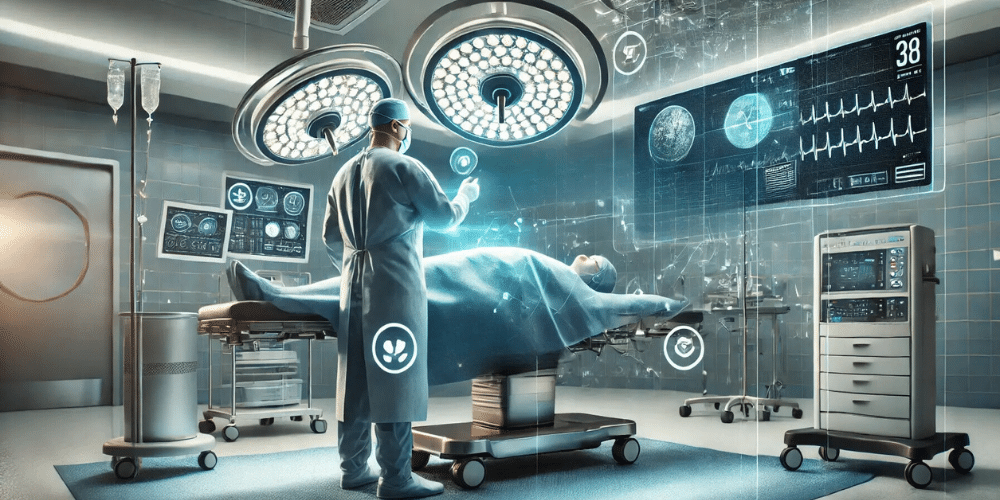Voice technology is rapidly changing the way healthcare operates, and hotwords (AKA wake words, keyword spotting, or voice activation) are at the forefront of this shift. In medical settings, the ability to control devices hands-free is more than just a convenience—it’s a necessity.
Whether it’s surgeons navigating critical tools mid-procedure or patients seeking control over their environment without assistance, hotwords are enabling smoother, more efficient operations.
Today we’re taking a look at how hotwords are transforming healthcare, the tech behind them, and what kind of future innovations we might expect that could make hotwords an even more integral part of medical environments.
The role of hotwords in medical environments
Why hands-free operations matter
In medical settings, hands-free tech isn’t just convenient—it’s vital. Surgeons, for example, often need to operate devices without touching them to maintain a sterile environment. By using hotwords, they can adjust equipment mid-procedure without breaking focus or hygiene protocols.
In emergency rooms or ICUs, where quick access to information is crucial, staff can use voice commands to operate devices, saving valuable time and keeping their hands free for patient care. This reduces contamination risk and improves efficiency.
Boosting patient independence
Hotwords also give patients more control over their surroundings, especially those with limited mobility. With simple voice commands, they can adjust their beds, call for assistance, or manage lighting and entertainment, making them more comfortable and reducing their reliance on staff.
This tech not only enhances patient autonomy but also helps healthcare workers focus on other critical tasks, improving overall care quality.
The tech behind medical hotwords: on-device vs. cloud-based solutions
On-device hotword recognition: private and compliant
On-device hotword systems process voice commands directly on medical devices, offering a secure and HIPAA-compliant solution. This method prevents patient data from being transmitted to the cloud, minimizing privacy risks and latency.
Sensory’s TrulyHandsfree technology exemplifies this, providing hands-free control for devices like ultrasounds while ensuring that sensitive information stays secure and confidential. The immediacy of on-device processing is vital in medical environments where rapid responses can be life-saving.
Cloud-based hotword solutions: flexibility vs. privacy concerns
Cloud-based solutions allow broader and more complex processing capabilities but pose privacy risks due to data transmission. Hybrid models, combining on-device and cloud processing, offer a balance: basic commands run locally, while complex information requests (e.g., accessing patient history) route through a secure private cloud. Importantly, voice data never leaves the device; only text data is sent to the cloud for processing. This approach ensures that medical professionals have the flexibility and depth of information they need without compromising security standards, as sensitive voice recordings remain securely on the local device.
Implementation challenges and considerations
Accuracy and noise sensitivity
Hotwords in medical environments face a major challenge: noise. ERs, ICUs, and other busy spaces can make it tough for systems to pick out commands accurately. If a hotword tech misfires—either missing a command or activating by mistake—it disrupts workflow and care.
Sensory tackles this by rigorously testing its systems to minimize these errors, ensuring reliable performance even in chaotic settings. This level of fine-tuning is critical; without it, the tech is just another problem, not a solution.
Customization and adaptability
Customization is key here. Different teams or devices need unique hotwords that fit their specific tools or tasks, lest the wrong device gets activated accidentally. Sensory’s systems allow for this flexibility, letting medical teams set up custom wake word commands that make sense for them.
Personalizing voice models also ensures devices respond only to authorized users, adding a layer of security that’s vital in healthcare. By adapting to specific needs, these systems enhance workflows without sacrificing safety or privacy standards.
What’s next?
As hotword technology evolves in medical settings, several key trends are emerging that will shape its future use:
● Smarter and adaptive hotwords: future systems will become more intelligent, recognizing not just commands but also the identity of the speaker. Doctors could receive detailed information while patients get simpler responses, improving usability and security in medical environments.
● Integration with medical systems: hotwords will link directly with larger systems like electronic health records (EHR) and diagnostic tools, enabling streamlined, voice-controlled workflows that reduce manual tasks and enhance efficiency.
● Voice security and biometric verification: adding voice biometrics will ensure that only authorized personnel can access sensitive information or control devices, reinforcing privacy and security—essential components in healthcare.
● LLM privatization: adding a hotword alone does not help in privacy situations going off to a cloud model for speech-to-text and large language model interpretation. But putting the speech to text on device with the hotword can not only improve wakeword to translation accuracy but also privatizes the message by removing the voice.
Hotwords are no longer just a convenience—they’re becoming an essential part of medical technology. As the demand for hands-free, accurate, and secure voice control grows, hotword systems are evolving to meet the unique needs of healthcare settings.
From on-device solutions that prioritize privacy to intelligent and adaptive systems that integrate with broader medical workflows, the future of hotwords looks bright. By enabling medical professionals to operate efficiently and empowering patients with greater autonomy, voice tech is reshaping healthcare.
Contact us today to see how Sensory’s on-device hotword solutions can elevate your medical technology and improve work in all manner of healthcare applications.
